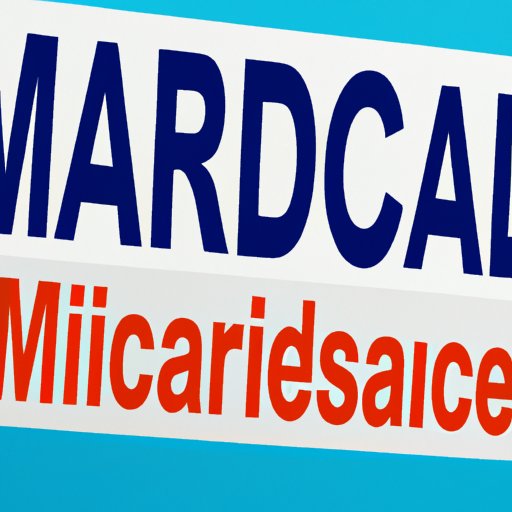Understanding the Costs of Medicare Advantage Plans
When it comes to healthcare, it’s important for seniors to understand what their options are. Medicare is a federal program that provides health insurance for those who are 65 or older, as well as for some younger individuals with disabilities. While Original Medicare covers many healthcare services, there are gaps in coverage that can leave seniors with high out-of-pocket costs. This is where Medicare Advantage plans come in. These plans are offered by private insurance companies to provide coverage beyond what Original Medicare offers, and it’s important for seniors to understand what they’re paying for. This guide will provide a comprehensive breakdown of the costs associated with Medicare Advantage plans.
What Are Medicare Advantage Plans?
Medicare Advantage plans (also known as Medicare Part C) are health insurance plans that are offered by private companies, but are regulated and partially funded by the federal government. These plans provide the same benefits as Original Medicare, but may also include additional services such as vision, hearing, and dental coverage, as well as prescription drug coverage. Medicare Advantage plans typically have a network of healthcare providers that patients can choose from, and may have lower out-of-pocket costs than Original Medicare.
Understanding the Costs of Medicare Advantage Plans
There are several parts of Medicare Advantage plans that seniors should be aware of, including premiums, deductibles, and co-insurance. Here’s a breakdown of what each of these costs entails:
- Premiums: This is the amount that a senior pays each month to enroll in a Medicare Advantage plan. Premiums vary by plan, and some plans may have premiums as low as $0.
- Deductibles: This is the amount that a senior must pay out-of-pocket before their plan begins to cover healthcare costs.
- Co-insurance: This is the percentage of a healthcare cost that a senior is responsible for paying (with the Medicare Advantage plan covering the rest).
It’s important for seniors to understand how these costs work together to impact their overall healthcare costs. While a plan with a low premium may seem appealing, it’s important to consider the deductible and co-insurance costs as well to understand the plan’s true value.
Costs of Popular Medicare Advantage Plans in the US
There are many different Medicare Advantage plans that seniors can choose from, and costs can vary widely depending on the plan and the location. Here are a few popular Medicare Advantage plans and their associated costs:
- Humana Gold Plus: This plan has a $0 premium, $4,900 out-of-pocket maximum, and includes drug coverage.
- Anthem MediBlue Access: This plan has a $50 premium, $7,550 out-of-pocket maximum, and includes drug coverage.
- Aetna Medicare Value Plan: This plan has a $0 premium, $6,700 out-of-pocket maximum, and includes drug coverage.
It’s important for seniors to compare the costs and benefits of each plan before deciding which one to enroll in. Some plans may have lower premiums but higher out-of-pocket costs, while others may have higher premiums but more comprehensive coverage.
Pros and Cons of Paying More for a Medicare Advantage Plan
While some Medicare Advantage plans may come with higher costs, there are often benefits to paying more for a plan. These benefits may include:
- More comprehensive coverage, including dental, vision, and hearing services
- Access to a larger network of healthcare providers
- Lower out-of-pocket costs for medical services
However, there are also drawbacks to choosing a more expensive Medicare Advantage plan. These include:
- Higher premiums
- More restrictions on which healthcare providers can be seen
- Higher out-of-pocket costs for medications and medical services
Seniors should carefully weigh the benefits and drawbacks of each plan before selecting one that fits their needs and budget.
Are Medicare Advantage Plans Worth the Extra Cost?
Studies have found that Medicare Advantage plans can save seniors money, particularly in terms of out-of-pocket costs for medical services. Additionally, many Medicare Advantage plans offer additional benefits beyond what Original Medicare covers, such as vision, hearing, and dental services. However, it’s important for seniors to carefully review the costs and benefits of each plan to determine if it’s worth the extra cost.
Navigating the World of Medicare Advantage Plans
When selecting a Medicare Advantage plan, seniors should consider their healthcare needs and priorities. Here are a few tips for choosing a plan that fits within your budget:
- Review the costs associated with each plan, including premiums, deductibles, and co-insurance.
- Consider the types of healthcare services that you need, both currently and in the future.
- Compare the networks of healthcare providers for each plan to determine which one offers access to your preferred providers.
- Watch for changes in plan costs and coverage from year to year, as these can impact your healthcare costs.
Conclusion
Choosing a Medicare Advantage plan can be a complex decision, but understanding the costs associated with each plan is an important step in making an informed decision. By reviewing the premiums, deductibles, and co-insurance costs associated with each plan and carefully considering your healthcare needs and priorities, you can select a plan that provides comprehensive coverage and fits within your budget.
(Note: Is this article not meeting your expectations? Do you have knowledge or insights to share? Unlock new opportunities and expand your reach by joining our authors team. Click Registration to join us and share your expertise with our readers.)
